[Visto: 1225 veces]
Mientras los gobiernos reunidos en Qatar (COP 18) retrasan las acciones para enfrentar el calentamiento global, los hielos se derriten y las aguas del mar avanzan sobre las tierras bajas. Y esto, también ocurre en el Perú, basta leer con más cuidado las noticias de los problemas de pérdida de playas en Trujillo y Máncora.
Este es un artículo de The Guardian sobre lo que está ocurriendo en las costas de Estados Unidos de Norteamérica.
US coastal cities in danger as sea levels rise faster than expected, study warns
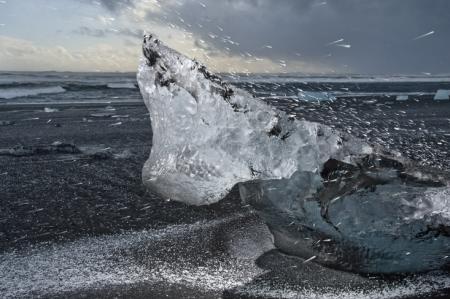 James Balog
James Balog
Satellite measurements show flooding from storms like Sandy will put low-lying population centres at risk sooner than projected
Suzanne Goldenberg, US environment correspondent
Sea-level rise is occurring much faster than scientists expected – exposing millions more Americans to the destructive floods produced by future Sandy-like storms, new research suggests.
Satellite measurements over the last two decades found global sea levels rising 60% faster than the computer projections issued only a few years ago by the United Nations’ Intergovernmental Panel on Climate Change.
The faster sea-level rise means the authorities will have to take even more ambitious measures to protect low-lying population centres – such as New York City, Los Angeles or Jacksonville, Florida – or risk exposing millions more people to a destructive combination of storm surges on top of sea-level rise, scientists said.
Scientists earlier this year found sea-level rise had already doubled the annual risk of historic flooding across a widespread area of the United States.
The latest research, published on Wednesday in Environmental Research Letters, found global sea-levels rising at a rate of 3.2mm a year, compared to the best estimates by the IPCC of 2mm a year, or 60% faster.
Researchers used satellite data to measure sea-level rise from 1993-2011. Satellites are much more accurate than tide gauges, the study said.
The scientists said they had ruled out other non-climatic causes for the rise in water levels – and that their study demonstrated that researchers had under-estimated the effects of climate change.
“Generally people are coming around to the opinion that this is going to be far worse than the IPCC projections indicate,” said Grant Foster, a US-based mathematician who worked on the paper with German climatologist Stefan Rahmstorf.
The implications are serious – especially for coastal areas of the US. Large portions of America’s Atlantic and Pacific coasts are regarded as “hotspots” for sea-level rise, with water levels increasing at twice the rate of most other places on the planet.
Scientists previously had expected a global sea-level rise of 1m by the end of the century. “But I would say that if you took a poll among the real experts these days probably they would say that a more realistic figure would be more than that,” Foster said.
“The study indicates that this is going to be as bad or worse than the worst case scenarios of the IPCC so whatever you were planning from Cape Hatteras to Cape Cod in terms of how you were preparing for sea-level rise – if you thought you had enough defences in place, you probably need more,” Foster said.
A study published last March by Climate Central found sea-level rise due to global warming had already doubled the risk of extreme flood events – so-called once in a century floods – for dozens of locations up and down the Atlantic and Pacific coasts.
It singled out the California cities of Los Angeles and San Diego on the Pacific coast and Jacksonville, Florida, and Savannah, Georgia, on the Atlantic, as the most vulnerable to historic flooding due to sea-level rise.
Sandy, which produced a 9ft storm surge at Battery Park in New York City, produced one example of the dangerous combination of storm surges and rising sea level. In New York, each additional foot of water puts up to 100,000 additional people at risk, according to a map published with the study.
But tens of millions of people are potentially at risk across the country. The same report noted that more than half of the population, in some 285 US cities and towns, lived less than 1m above the high tide mark.
“In some places it takes only a few inches of sea-level rise to convert a once in a century storm to a once in a decade storm,” said Ben Strauss, who directs the sea-level rise programme at Climate Central.
Large swathes of the mid-Atlantic coast, from Virginia through New Jersey, also faced elevated risk of severe flooding, because of climate change, he said.
Sigue leyendo →
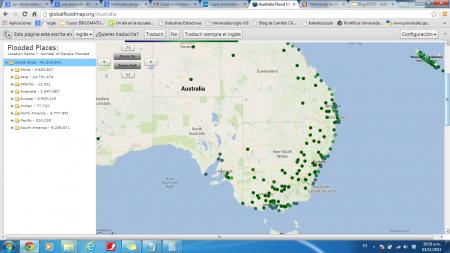
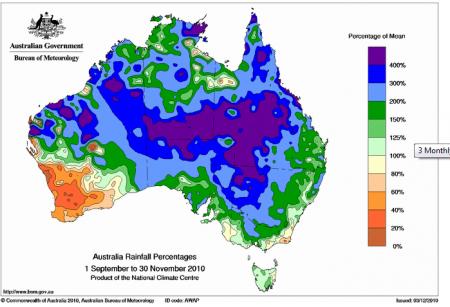
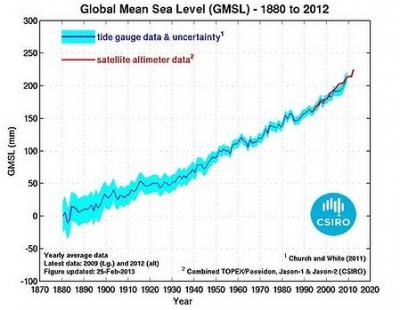
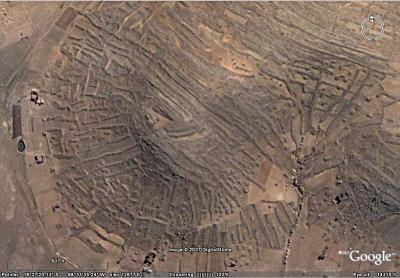
 James Balog
James Balog